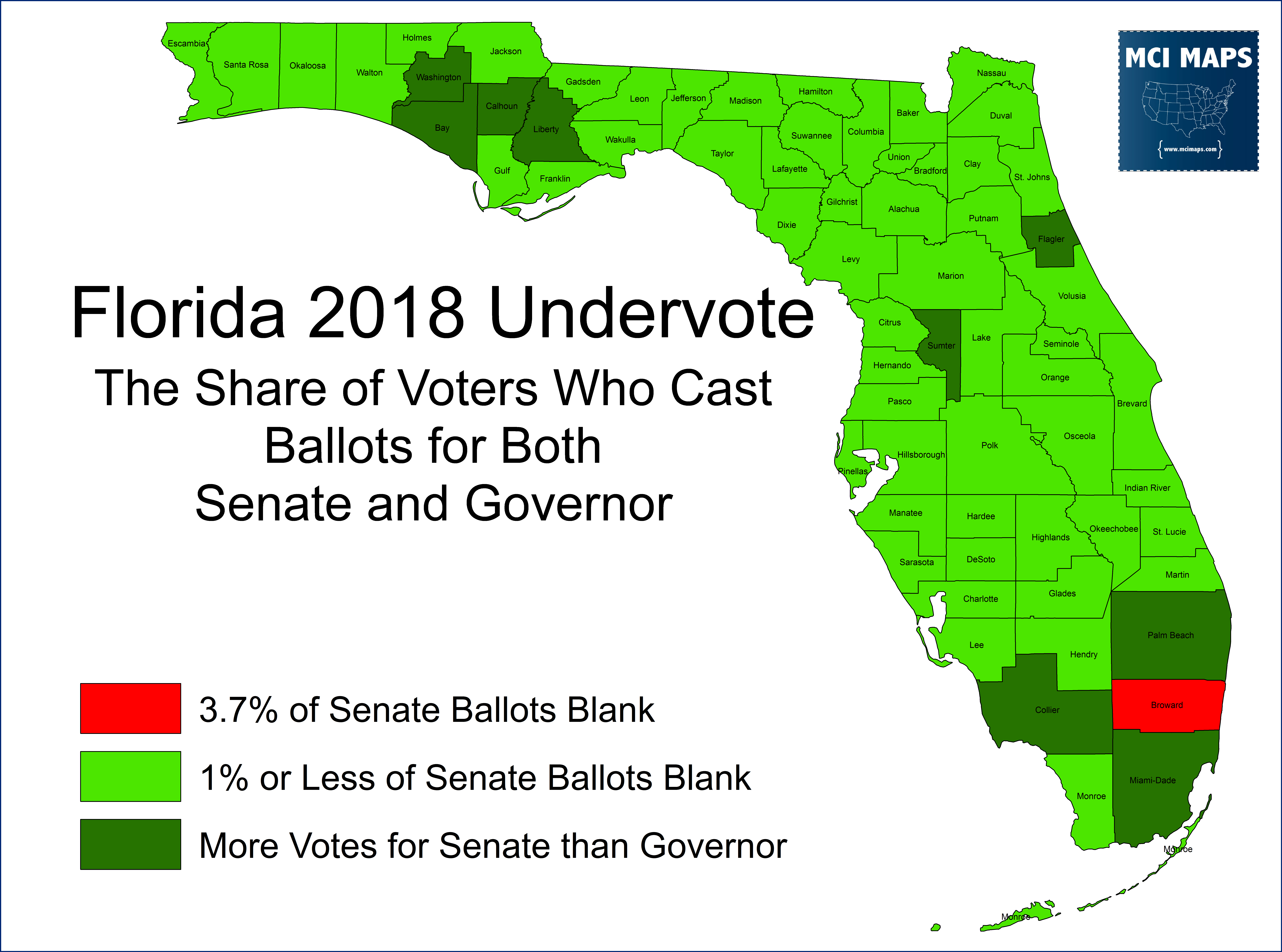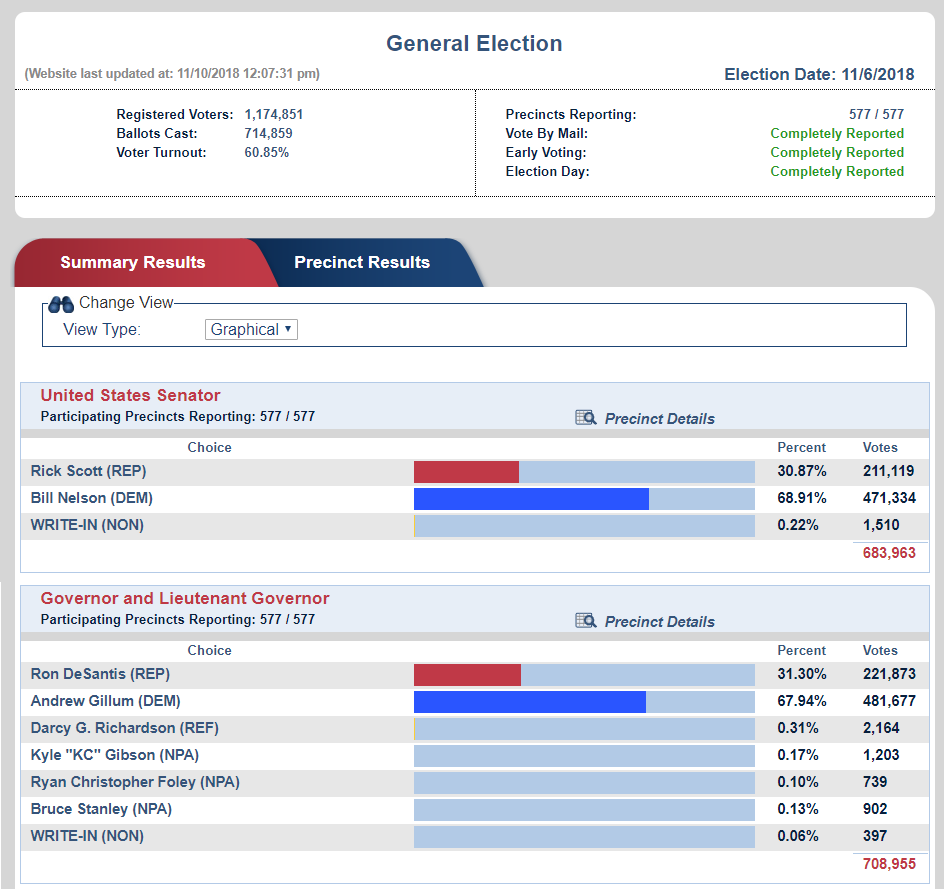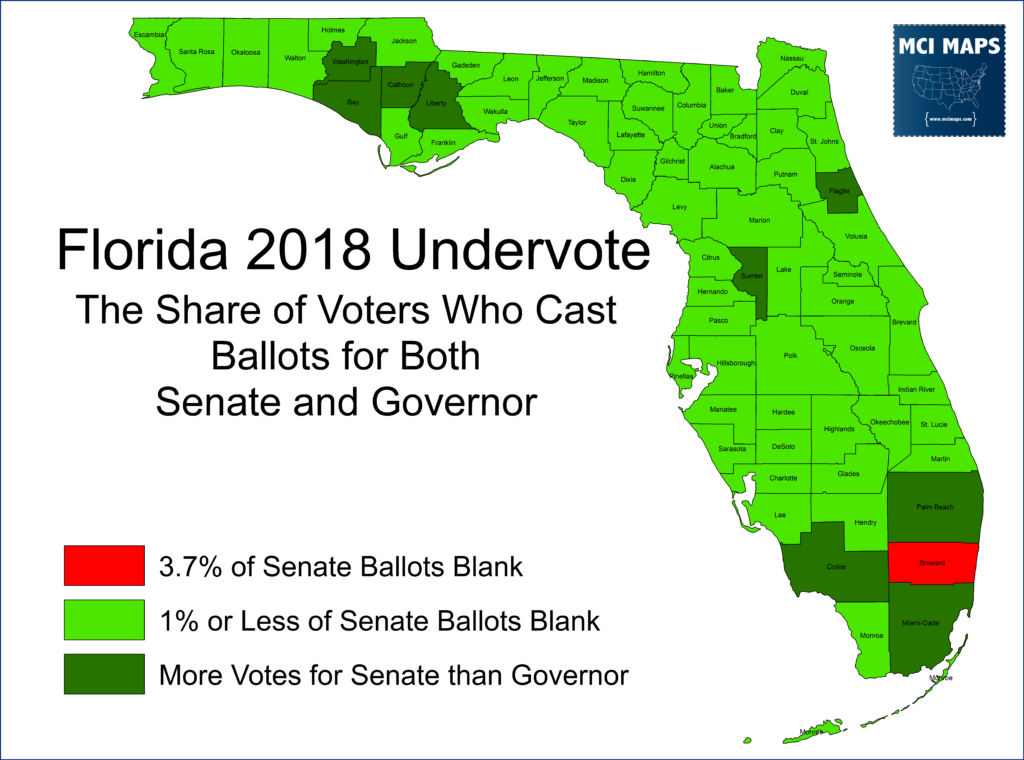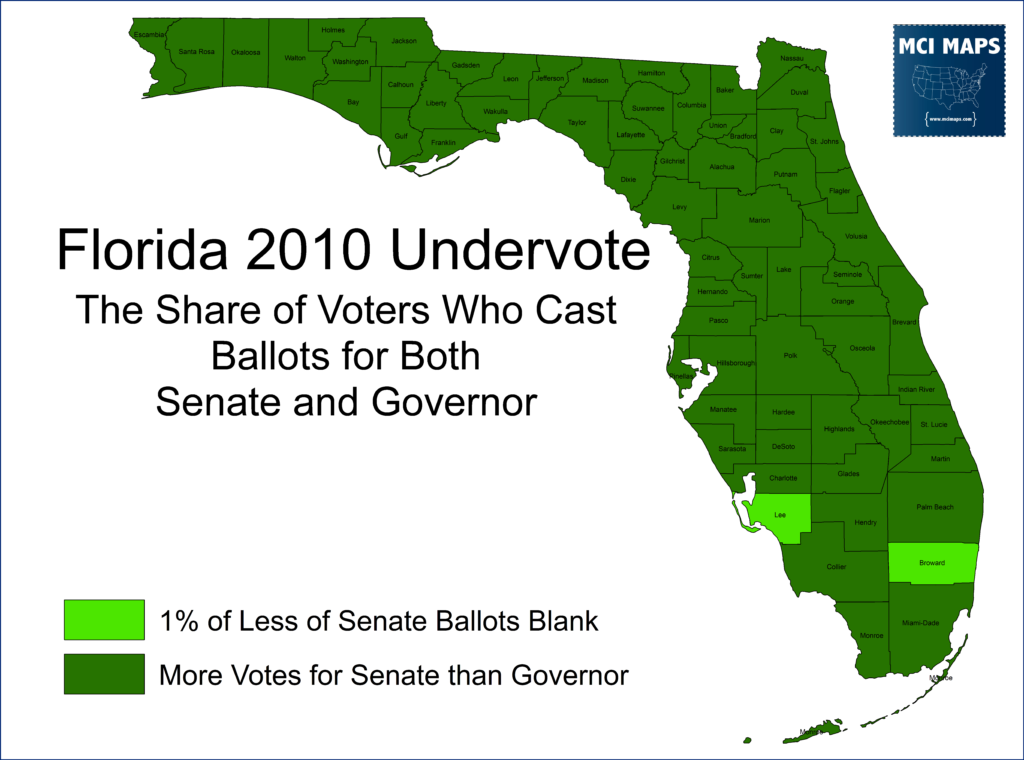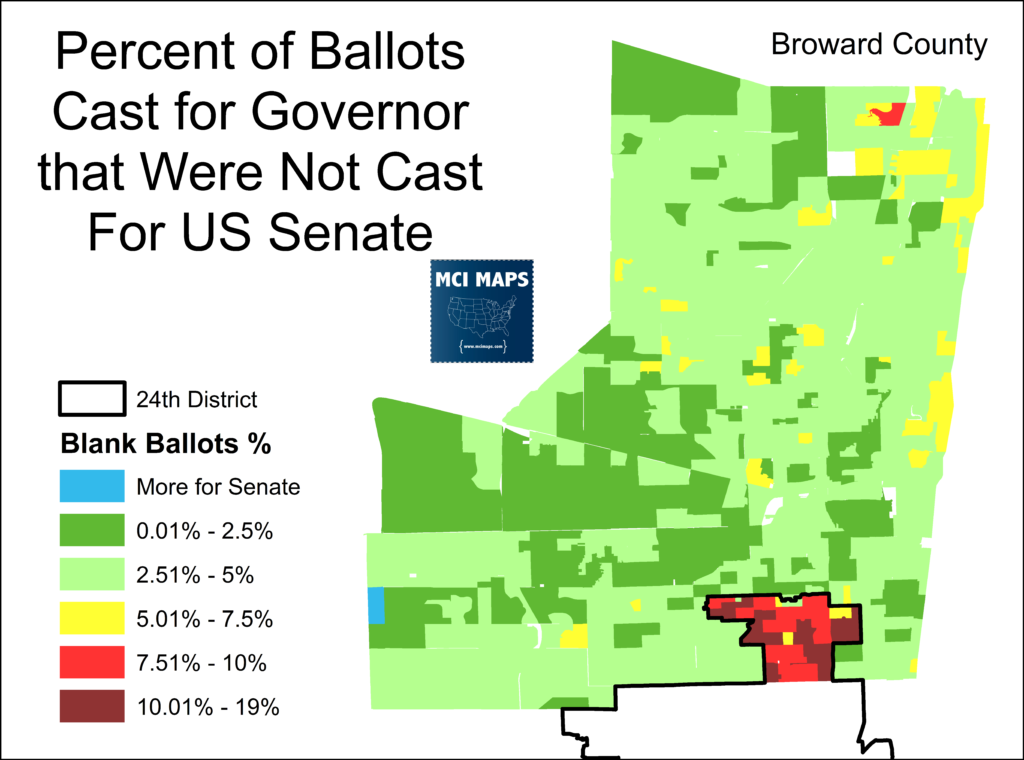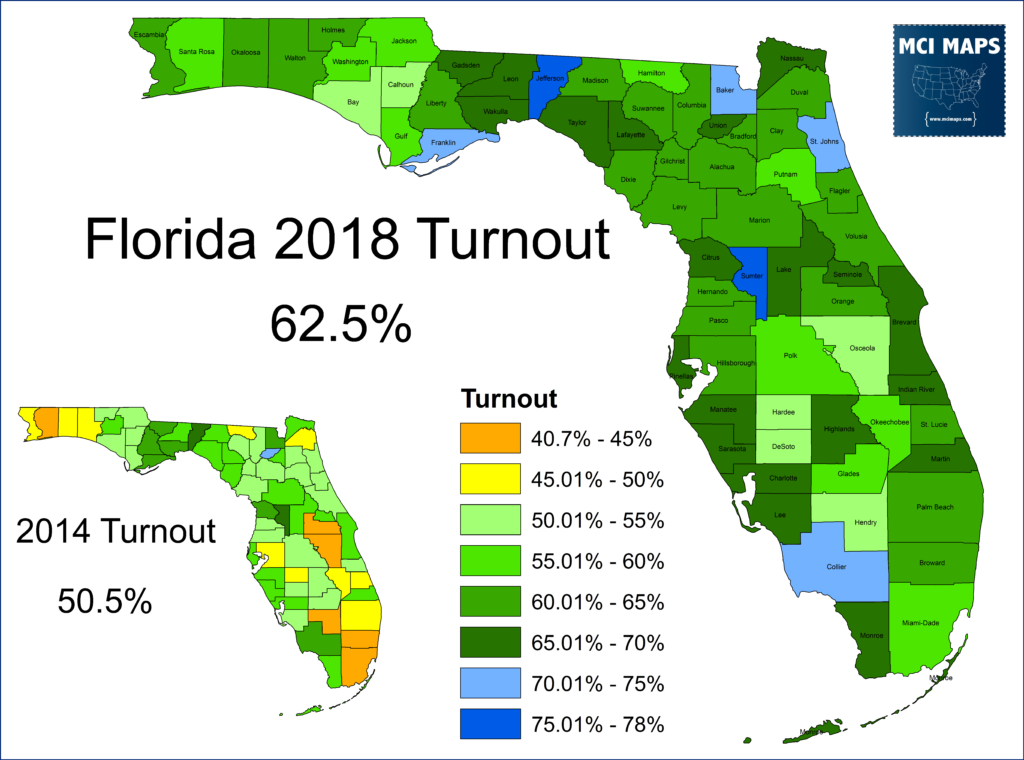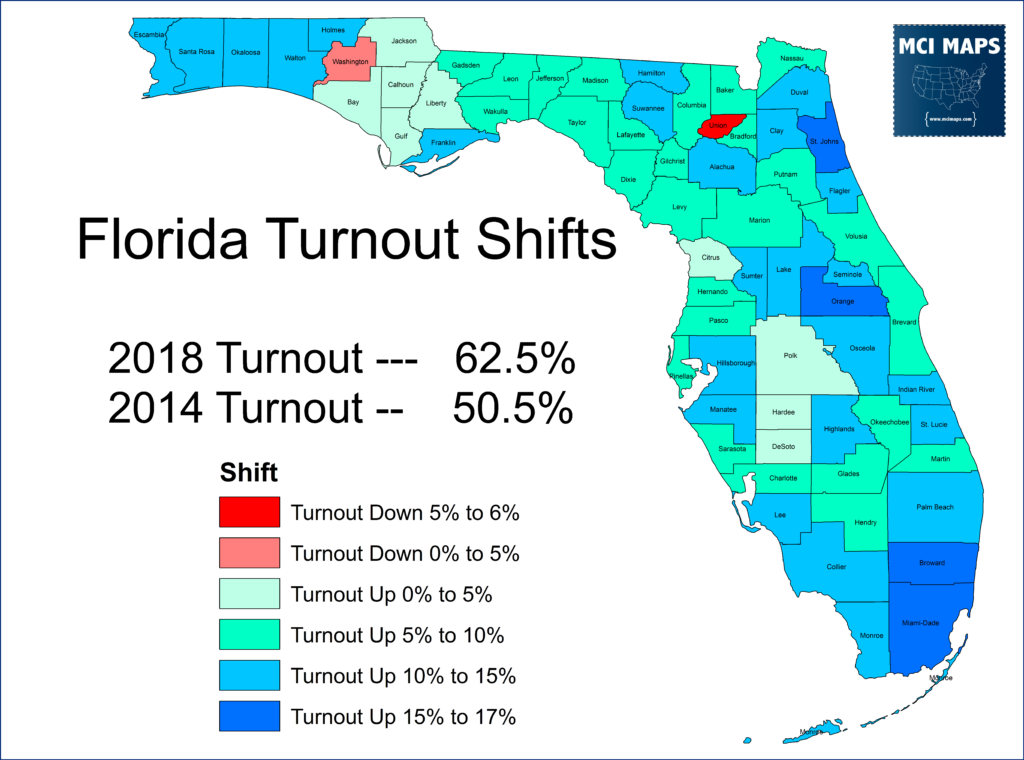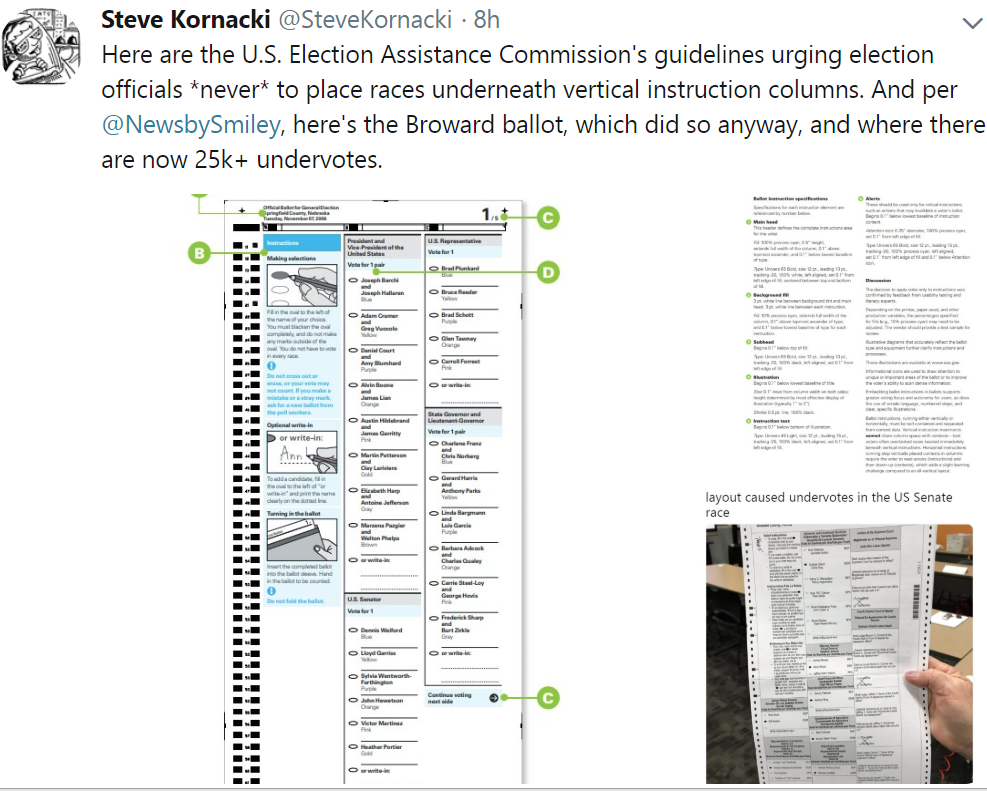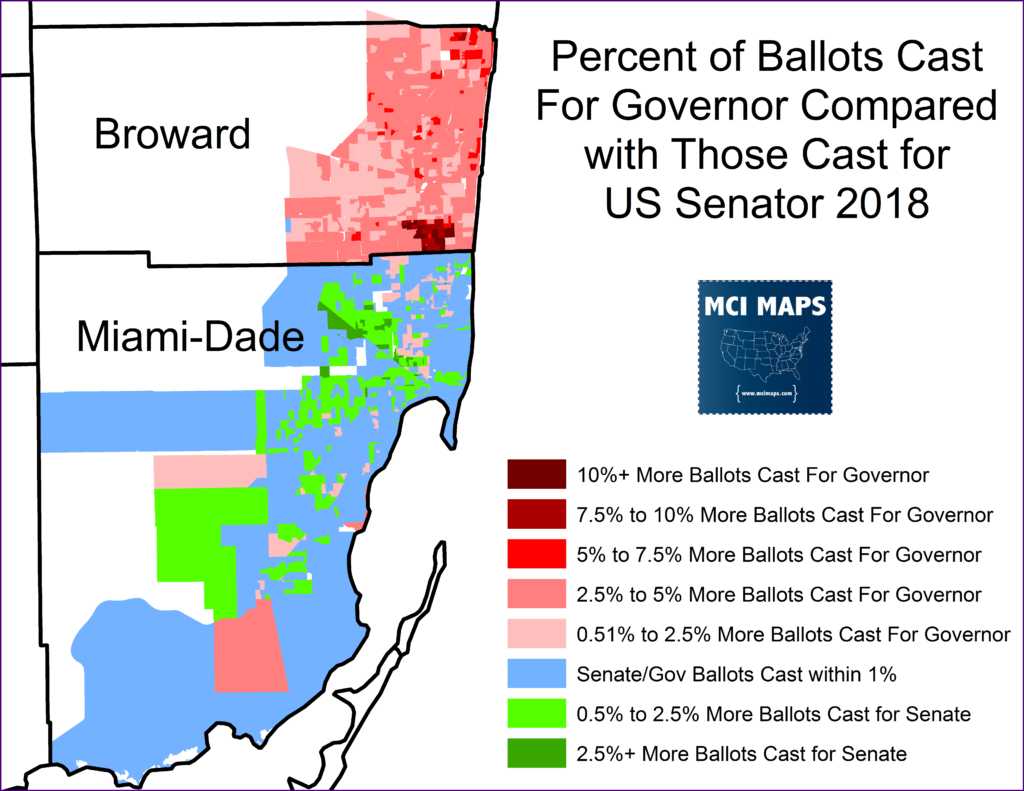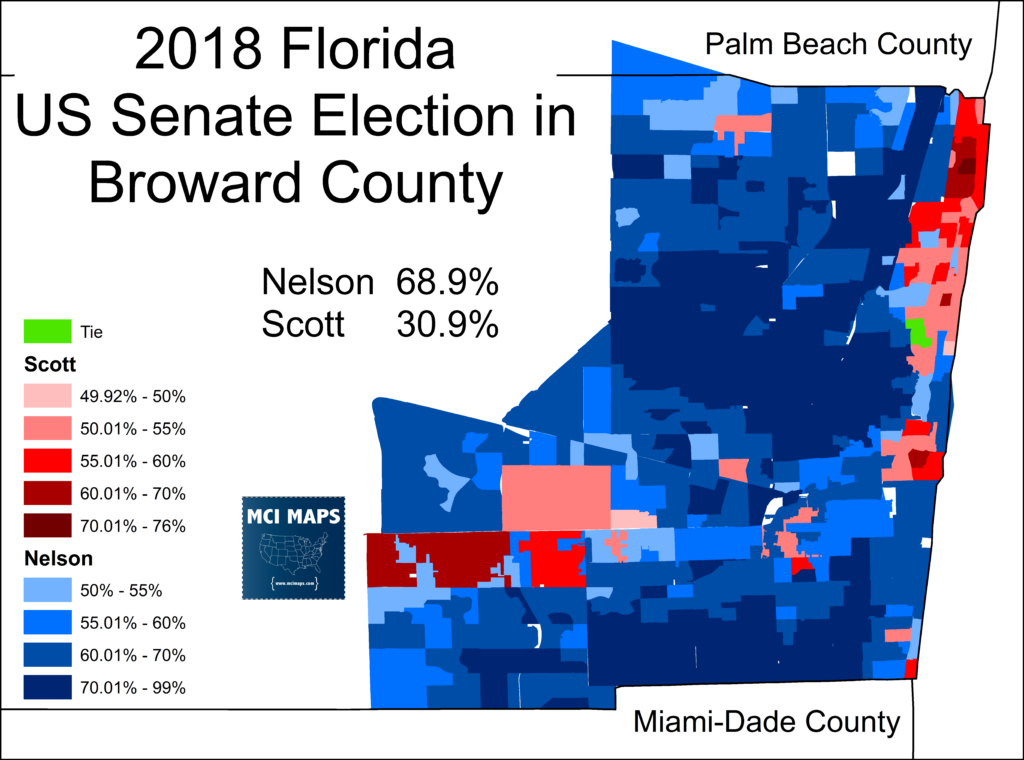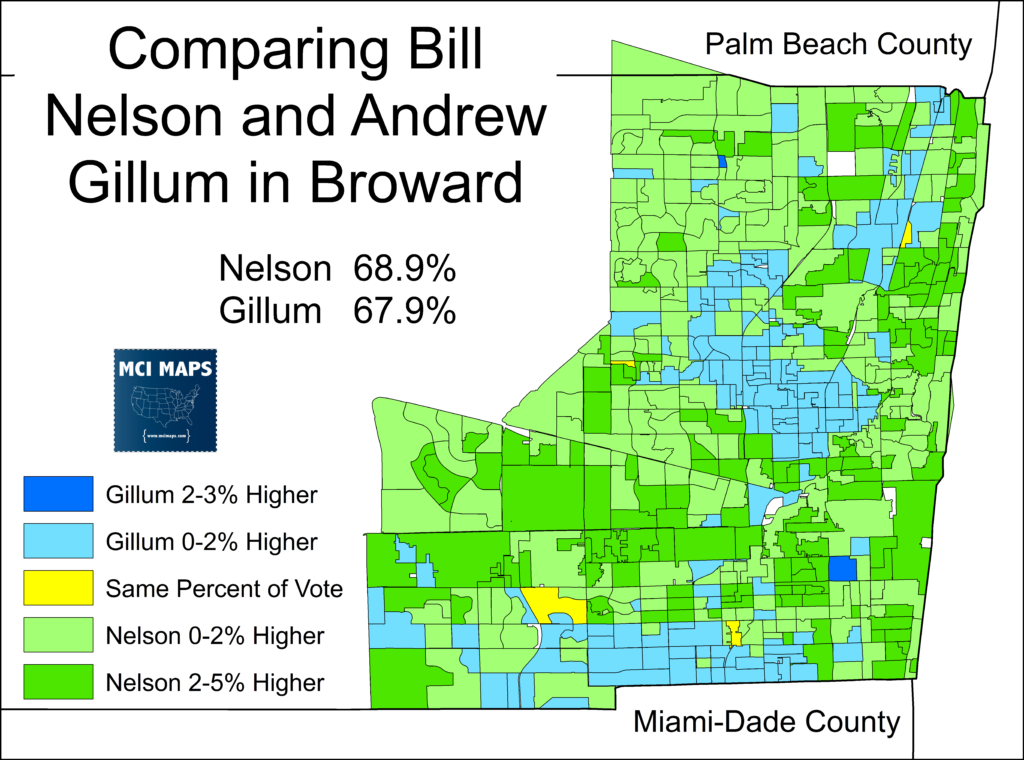Wednesday morning, I was sitting at work and trying to distract myself about the disappointing election results in Florida. Then, I received a phone call from Dan Sweeney at the Sun Sentinel. He had a question, why were there so many more votes cast for Florida Governor than US Senate? The number was around 25,000.
That definitely struck me as odd and I said I would investigate later that evening. It turned out that indeed there was a large gap in votes counted for senate and for governor. And once more, it was larger than any other county in the state. A full 3.7% of ballots for US Senate appeared to be blank. Shattering any other county’s undervote.
This undervote (ballots left blank for a race) has never been so high for a US Senate election. Not only does it stand out from the other counties, it stands out from the last time the Governor and Senate seat were contested on the same ballot.
In 2010, Broward was far more in the norm. Less than 1% of Senate ballots were left blank and almost all counties saw more votes for US Senate.
This gap was also especially high in one specific region of the county – The Florida 24th. Only a handful of precincts in the county are in the 24th, which is held by Democrat Frederica Wilson and largely sits in Miami-Dade County. In these precincts, the undervote for US Senate was over 7%
The only thing especially notable that separates the 24th from the rest of the county was that this was the lone district touching Broward that saw its Congressperson unopposed. This meant the race would not appear on the ballot at all. So why does this matter?
Let’s take a look at the ballot design for Broward County. Broward uses optical scan ballots, like many counties. Each county has a great deal of discretion over how their ballot is designed. The only real rules are that federal races start the ballot, then state, local, amendments, and so on. Normally this means you will see US Senate before you see US Governor. However, Broward decided to put their instructs on the upper left side of their ballot and then squeezed the Congressional section (US Senate an US House) on the bottom left. Governor then was displayed on the upper-middle.
People skip the instructions. They know the instructions – fill the oval in. The Sun Sentinel had reports of people saying they missed or almost missed the US Senate race on their ballot. Poll workers reported confused voters and having to point out where the Senate race was.
Many have questioned how anyone could miss such an important election – one which drew millions of dollars in spending. The answer is simple – people are busy, voting can be hectic, and it can be easy in that split moment to not realize their is an important race you are missing – ESPECIALLY if your less of a politico. Turnout was strong this cycle. It was a record for a Florida midterm. And turnout was up in Broward; 60% compared to 44% in the last midterm.
With stronger turnout comes a larger pool of voters who are less engaged and more likely to forget at that moment that the US Senate is on their ballot.
This issue is real. The US Election Assistance Commission actually argues rules/instructions should never be placed on a column that will also hold a race. They saw the potential issue here.
So why would the undervote be so much higher in the FL 24th? My theory is that the lack of a congressional race meant there was one less opportunity to spot that races existed on the bottom left. Look at that Florida ballot again — without the congressional race, the Florida Senate race sits alone under the rules – blending in further.
Speculation abounds that folks simply showed up in Broward to cast ballots for Governor and not Senate. Specifically that Democrats showed up for Gillum, the dynamic Governor candidate and not for Nelson, who is a much quieter politician. This is negated by the fact undervote was higher across the county, not just Democratic strongholds. It also is negated by the fact that neighboring Dade, another Democratic county, does not see the same level of undervote.
Notice how undervote levels radically shift the second the county border is crossed. Several precincts in Dade actually saw more votes cast for US Senate. The difference? Dade’s ballot did not stuff the federal races in the bottom left. Broward is, as far as we see, the only county to do so.
We also see a slight undervote difference based on the method of voting. Those who voted by mail had the lowest rate of undervote. This isn’t especially surprising as vote by mail allows for a less rushed experience in the comfort of one’s own home. Meanwhile, undervote was highest during election day – a time when folks may be voting before or after work or on breaks and feel more rushed. Early voting, which can be a rush or more relaxes depending on your experience, fits nice and in the middle.
The undervote in Broward varies by Congressional district to a modest degree. The 20th district and 22nd district were low-key races. 20th District Rep Alcee Hastings had a write-in opponent and 22nd District Rep Ted Deutch was safe against an underfunded challenger. In the 23rd district, Debbie Wasserman-Shultz faced nominal opposition from a GOP perennial candidate and conspiracy theorist NPA. However, she was by far the most high-profile Congressperson of the county due to her DNC role and national controversies in 2016. Subsequently her district had the lowest Senate undervote and congressional vote. My theory is her infamy aided a few voters in “looking” for that race and subsequently spotting Senate right above. Meanwhile, the unopposed 24th saw the undervote spike.
Congressional undervotes varied as well. Hastings only had a write-in opponent and therefor had the highest undervote (as opponents apparently opted to leave the race blank vs writing some random name in). The GOP primary in the 22nd, meanwhile, had been especially nasty and saw an ousted GOP challenger tell his backers not to support the winning Republican. This could have aided in the higher undervote there compared with US Senate – something further backed up by the higher undervote being along GOP-aligned coastal areas.
So why does this US Senate undervote matter so much? What does 3.7% really mean? Could it even change the Senate race? The answer is…. possibly.
Right now, the Senate race stands at Rick Scott +12,000 or so. Recounts are underway and oversees absentees still have time to arrive. Meanwhile, this undervote was in one of the most Democratic counties in the state. Broward is a democratic bastion that saw Nelson and Gillum win by over 30 points. It is critical for Florida Democrats.
Nelson did slightly better than Gillum by racking up stronger margins in white suburbs while under-performing by just a little in the African-American communities of North and South Broward.
But overall, party-line voting was very strong in Broward. Nelson only took a few extra precincts than Gillum. Overall the county was solid blue while Republicans won their traditional bases of the Northern beach communities and Southwest Ranches.
This means the undervote took place in an area where every missed vote is much more likely to be for Nelson than for Scott
In fact, if I took all the blank Senate ballots in Broward and assume they broke the same way their respective precinct voted for Governor, then Nelson could have gained 10,000 extra votes over Scott.
Of course, we will never know how those blank ballots would have gone. They could lean more left or lean more right. Nelson could therefor have netted only 7,000, or reverse he could have netted 12,000.
We won’t know how those blank ballots would have been cast if they saw the Senate race. If Nelson winds up closing the gap to within 10,000, then there is a real case this error cost him his seat. Either way it represents a failure of ballot design and the latest in a long list of screw-ups by the Broward Elections Supervisor.
In 2020, the top priority of Broward democrats must be to oust her in an election – if she hasn’t already been removed before then.

